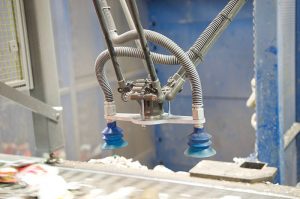
In a session moderated by Roxanne Spiekerman (left), resin markets experts Marcelo Wasem (center) and Joel Morales (right) presented their analysis to attendees at the 2022 Plastics Recycling Conference. | Brian Adams Photo/Resource Recycling, Inc.
Post-consumer HDPE and PP prices have been hot lately, and they’re likely to stay that way given consistently strong demand and relatively slow supply increases, according to one market expert.


 Associate Editor Jared Paben has worked for Resource Recycling since December 2014. Most of his earlier career was spent as a reporter for the daily newspaper in Bellingham, Wash., but he also has experience working for the Oregon volunteerism commission and for Oregon nonprofits serving low-income populations. He can be contacted at
Associate Editor Jared Paben has worked for Resource Recycling since December 2014. Most of his earlier career was spent as a reporter for the daily newspaper in Bellingham, Wash., but he also has experience working for the Oregon volunteerism commission and for Oregon nonprofits serving low-income populations. He can be contacted at  Over just a few years, robotic sorting has gone from a gee-whiz laboratory curiosity to a key technology in a number of different types of facilities.
Over just a few years, robotic sorting has gone from a gee-whiz laboratory curiosity to a key technology in a number of different types of facilities.
 A half-hour’s drive northwest of downtown Milwaukee, the largest MRF in Wisconsin is working to extract value from the region’s single-stream recyclables. And it has recently added robotics and other sortation technology to help improve efficiency.
A half-hour’s drive northwest of downtown Milwaukee, the largest MRF in Wisconsin is working to extract value from the region’s single-stream recyclables. And it has recently added robotics and other sortation technology to help improve efficiency.




